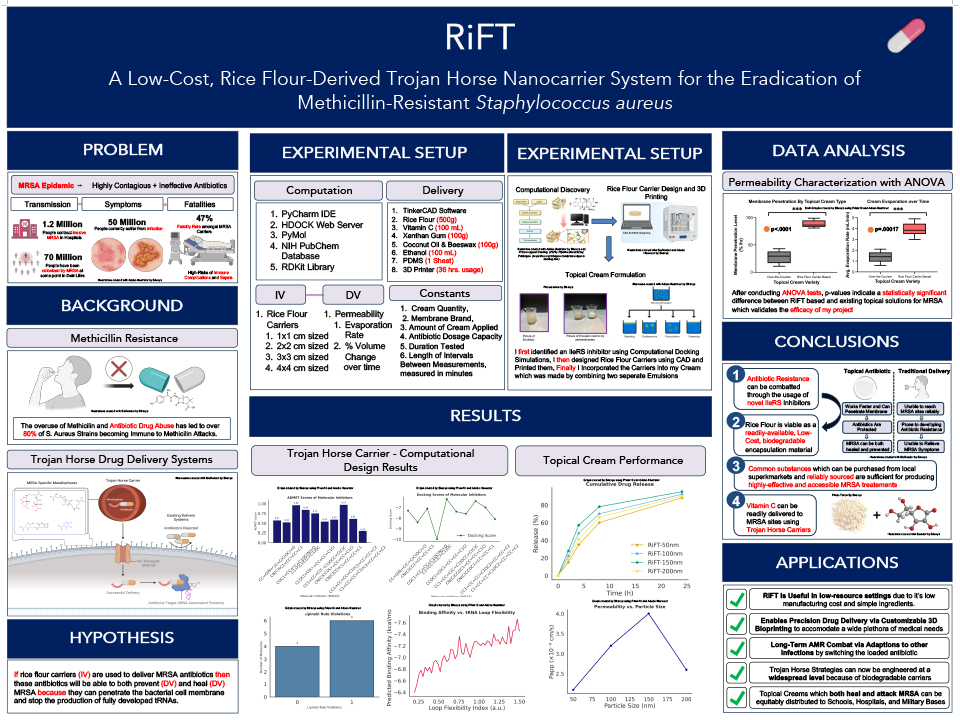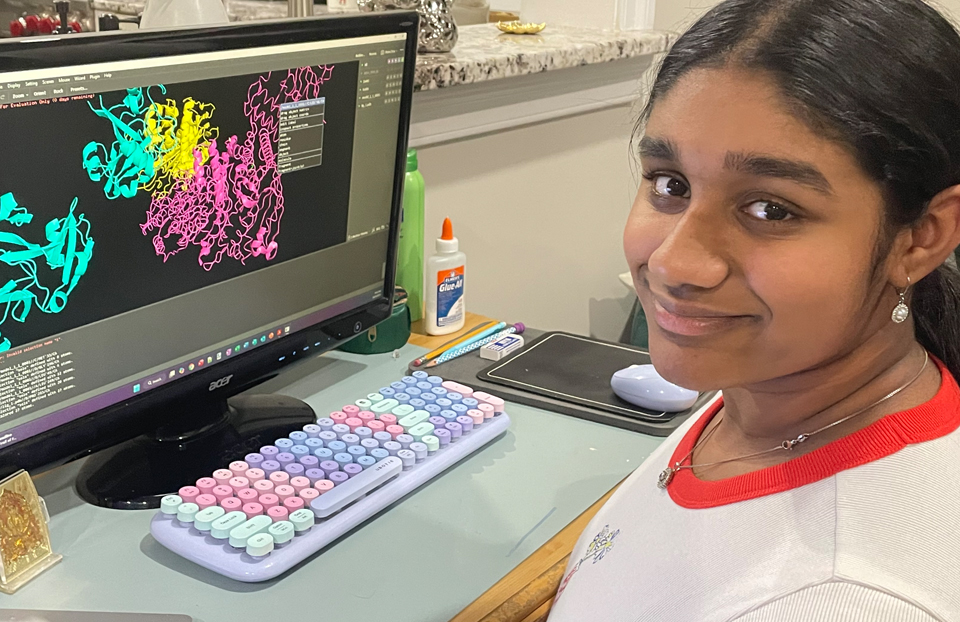Bhavya Uppalapati
7th Grade, Rachel Carson Middle School
Herndon, VA
RiFT: A Low-Cost, Rice Flour-Derived Trojan Horse Nanocarrier System for the Eradication of Methicillin-Resistant Staphylococcus aureus
View Poster
Project Background
Many members of Bhavya’s family work in healthcare, and have been infected with MRSA — Methicillin-Resistant Staphylococcus aureus. “Even though there were low-cost antibiotics available to help my family, all of them failed within days,” she says. MRSA infections are often on the skin, where they can be deep and painful. If they get inside the body they can create potentially-deadly infections—and they are resistant to many antibiotics. Bhavya decided to develop a way to deliver antibiotics against MRSA more effectively on the skin.
Tactics and Results
Bhavya learned that the tiny granules in rice flour could be used to carry small chemicals to put on skin. She used rice flour, xanthan gum, and beeswax in a 3D bioprinter to make a filament. She loaded her rice flour carrier with the antibiotic doxycycline and ascorbic acid and mixed it into a topical cream. Bhavya also added fluorescent microspheres so she could track drug delivery. “I did not have access to live MRSA cultures for my work due to biosafety restrictions,” she notes, so instead she used a silicone polymer that could mimic a cell membrane with a negative electric charge—like MRSA bacterium. She applied her cream and a control cream to the membrane, and measured how deep the drugs went, and showed that her carrier could penetrate the barrier. Bhavya also used computer models to show how the doxycycline would bind with an enzyme in MRSA.

Beyond the Project
Bhavya suffers from melioidosis, a rare kind of chronic bacterial infection, and has been an intern with the Rare Disease Council of America SRES internship. Bhavya would like to be a biomedical engineer. “Discovering the cures for some of the world’s most important diseases is an important feat, delivering these medicines at a low-cost, and making sure they can combat resistance is a crucial final step,” she says.

